Surinder Sud
Agricultural development is considered a reliable means to reduce rural poverty. But this is not true in Bihar's case, writes Surinder Sud.
After a protracted phase of near stagnation or even slowdown in agriculture, the state, over the past few years, witnessed a notable acceleration in agricultural growth and the implementation of poverty alleviation programmes.
Yet, going by the findings of a recent study, rural poverty in the state has not been impacted in any significant way.
The reasons for this could be many.
. . .
Bihar progressing? Not really!
Image: Children in a school in Bihar.The most noteworthy among them seems to be the extremely small size of land holdings of below poverty line households.
Bihar has 8.8 per cent of the country's population with only 2.8 per cent of its total land.
Agriculture, moreover, accounts only for about 16 per cent of the state's gross domestic product but has to provide employment to nearly 70 per cent of the rural workforce.
Besides, poverty in Bihar, like in many other backward states, is multi-dimensional and not confined to low income.
Deprivation in terms of overall living standards, education, health and other social parameters is intense and needs to be targeted along with income generation. Generating non-farm employment is equally imperative.
. . .
Bihar progressing? Not really!
Image: Patna.These and other factors that contribute to sustaining rural poverty have been brought out succinctly in a paper titled 'Dimensions of poverty in Bihar' by a team of experts led by K M Singh, head of the socio-economic and extension division of the Patna-based Research Complex for Eastern Region, which is a wing of the Indian Council of Agricultural Research.
The analysis is based on the latest data (2010-11) collected under a wider research project on 'tracking change in rural poverty in the household and village economies in South Asia'.
The paper's focus is on Patna and Darbhanga districts.
. . .
Bihar progressing? Not really!
At the macro level, the numbers indicate a remarkable turnaround in Bihar's agriculture over the past five years.
The average annual growth in the state's agricultural GDP in the 11th Plan has been estimated at 2.6 per cent -- substantially higher than -1.14 per cent in the Ninth plan and 0.96 per cent in the Tenth plan.
This achievement seems all the more creditable considering that the state had to grapple with devastating floods in 2007 and 2008 and drought in some parts in 2009 and 2010.
. . .
Bihar progressing? Not really!
Image: A child drinks water at a flood relief camp in Araria district town in Bihar.However, the state's agricultural GDP grew at an impressive 31 per cent in 2006-07 and 11.32 per cent in 2008-09.
Still, the total number of poor in Bihar soared from 38 million in 1993-94 to some 43 million in 2010-11.
The micro-level picture, captured in this study, indicates that the average land holding of the sampled households is just 0.28 hectare in Patna and even smaller, 0.24 hectare, in Darbhanga.
On a per-capita basis, the farm size works out to merely 520 square metres in Patna and 360 square metres in Darbhanga.
Such miniature holdings are uneconomical to till. Many BPL landowners, therefore, prefer to lease out their land rather than cultivate it themselves.
. . .
Bihar progressing? Not really!
Image: Bill Gates (L) interacts with a villager in Aulali village, in Bihar.Photographs: Reuters
No amount of agricultural development under these circumstances can improve living standards.
Landless families, in any case, are least affected by agricultural growth and, therefore, remain poor.
The numbers also show a distinct link between poverty and such assets of households as livestock, housing, electricity, institutional credit and so on.
Most BPL houses score low on these counts.
Education, moreover, may also be a cause as well as the result of poverty.
About two-thirds of the family members of the sampled BPL households are wholly illiterate.
. . .
Bihar progressing? Not really!
Image: A jamun seller in Bihar.In contrast, only eight per cent among the above-poverty line population is illiterate in these two districts.
A caste-wise analysis reveals, predictably, that almost all the Scheduled Caste households belong to the BPL category -- the precise figure being 100 per cent in Darbhanga and 92 per cent in Patna.
Among the other backward castes, too, the incidence of poverty is rather high -- 65 per cent in Patna and 35 per cent in Darbhanga.
Besides, few of the several ongoing poverty mitigation programmes target human capital enrichment through better education, health, housing and social participation.
Unless such issues are suitably addressed, it may be difficult to dent poverty in Bihar.

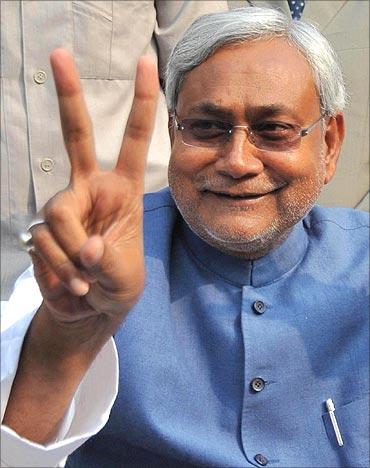

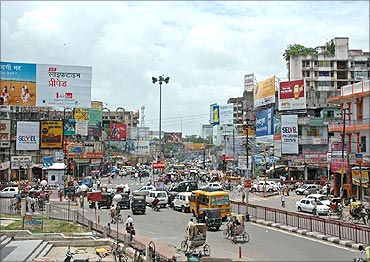
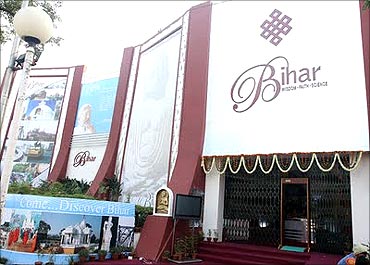
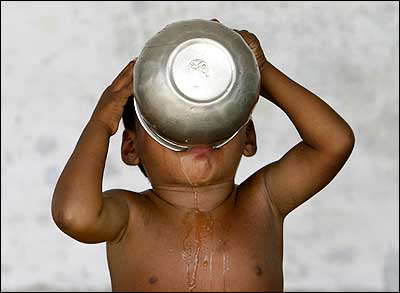

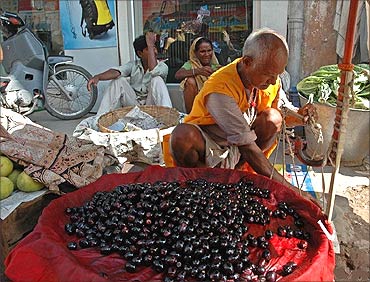

article